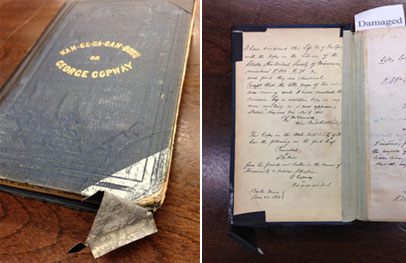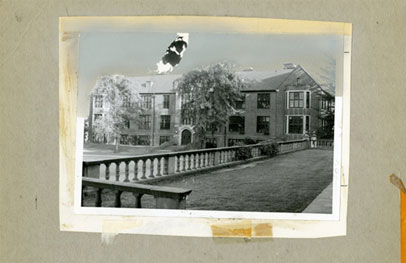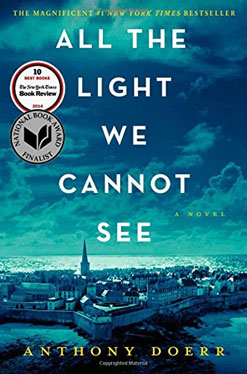
1.) “Toaster”, 2015, 2.) “Timer”, 2015, 3.) “Clock Radio”, 2015, Crushed appliances and mounted digital print
Dylan Harvey, a graduating studio art major, is the 2015 recipient of the 13th annual Library Art Award for his series of crushed appliances. The selection was based on a number of factors, including originality, creativity, content integration, craftsmanship, and viewer engagement. Congratulations, Dylan!
Artist’s Statement:
“What is valuable? Packaging creates an illusion of perpetuity and attempts to elicit an emotional response in the consumer. I incorporate the satisfaction of buying something new and full of potential, immediately with the degradation of the object’s value at the end of its useful life. I emphasize the fleeting moments of the object’s novelty by juxtaposing crushed common household items with pristine packaging.”
-Dylan Harvey
Comments from the Judges:
“The smashed appliances evoke an primal response…novel integration of domesticity and art…provides insights into how consumers respond to products when the packaging has changed…takes an object that has outlived its usefulness and repurposes it…raises questions about waste and overconsumption…explores the role of packaging in consumer behavior…the background digital print helps the viewer situate the object within its environment.”
About the Judges:
Hilary Robbeloth is a Metadata Librarian at Collins Library.
Jada Pelger is the Information Resources Coordinator at Collins Library.
Jamie Spaine is Administrative Coordinator at Collins Library.
Lori Ricigliano is the Associate Director for User Services at Collins Library.











